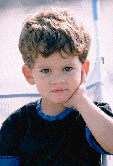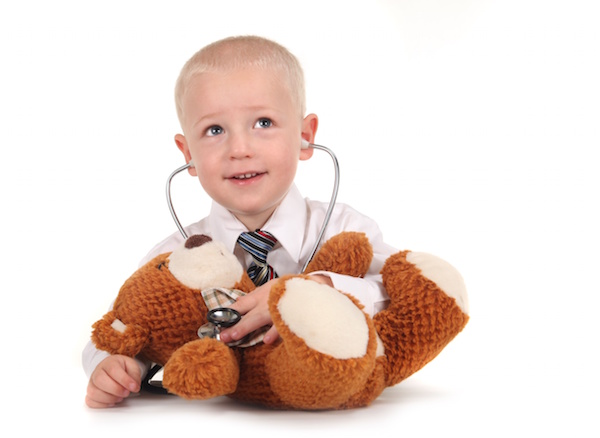
MONDAY, Jan. 28 (HealthDay News) — Children and teens who get migraine headaches suffer in multiple ways, missing school and fun time with friends while waiting for the debilitating pain to subside.
Now, two new broad reviews of pediatric migraine research point to a troubling conclusion: There is no clear evidence that drugs currently used to treat and prevent headaches among adults do anything much to help similarly afflicted children.
The finding stems from a pediatric migraine-treatment investigation conducted by the U.S. Food and Drug Administration (FDA) and a pediatric migraine-prevention study out of the Medical College of Wisconsin in Milwaukee. The results of both analyses are published online Jan. 28 in JAMA Pediatrics.
On the migraine prevention front, Wisconsin’s Dr. Jeffrey Jackson, a professor of medicine, and colleagues reviewed 21 previously conducted studies (dating up to mid-2012) that included male and female patients up to age 18.
Twenty of the studies had focused on “episodic migraine,” which is when migraine occurs fewer than 15 times a month. Just one study involved “chronic headaches,” occurring 15 or more times a month.
All of the studies had either compared two or more migraine medications or a single drug’s effectiveness in reducing headache frequency and severity against that of a dummy pill (placebo). The treatments included antiepileptic medications, antidepressants, antihistamines, calcium channel blockers, blood pressure control meds, and nonsteroidal anti-inflammatory drugs.
The review revealed that to a large degree inactive placebos, not prescription drugs, were widely effective in controlling headaches, reducing occurrence on average to fewer than three a month from upwards of nearly six a month.
The analysis suggested that only one antiepileptic drug (topiramate) and one antidepressant (trazodone) proved to be more effective than a sugar pill.
But the evidence supporting each of these drug’s effectiveness was “limited,” and the team concluded there was generally insufficient data concerning pediatric migraine patients to draw firm conclusions.
“It’s very discouraging,” said Jackson. “I was rather shocked to see, quite frankly, how few studies were done among children with headaches, and that the handful of studies we have suggest that the benefits of these drugs, if any, aren’t really big.”
Also disturbing is that “these medicines are kind of nasty,” he added. “Some cause dry mouth, or fatigue, or problems with concentrating. They’re not really medicines you would want your vibrant teen to be on if they’re not working.”
Migraine prevalence increases with age, from 3 percent of preschool children to 11 percent of elementary school kids and 23 percent of high school students, according to background information in the study.
For the pediatric migraine treatment analysis, Dr. William Rodriguez, a pediatrician in the FDA’s Office of Pediatric Therapeutics, and colleagues reviewed all relevant data submitted to the FDA between 1999 and 2011 regarding five drugs previously approved for adult migraine treatment. Those drugs included: sumatriptan succinate nasal spray, zolmitriptan, eletriptan hydrobromide, almotriptan malate and rizatriptan benzoate pills.
Seven reviewed studies had been conducted according to rigorous, randomized, placebo-controlled standards, and involved patients between 12 and 17 years old who had a history of migraines lasting at least four hours per incident. Most of the participants were white, and the studies included slightly more girls than boys overall.
As with the headache prevention study, the FDA review found that placebos were often effective in relieving pediatric headaches, with roughly 53 to 58 percent of sugar pill patients experiencing pain relief within two hours of treatment.
The authors concluded that the strength of the observed placebo effect made it difficult to gauge the effectiveness of prescription treatments. They also noted that no trial conducted between 1999 and 2003 showed any drug effectiveness among adolescents whatsoever.
The team suggested that study design changes might help clarify matters, perhaps by distinguishing between children who have short-lasting migraines and those with longer bouts, or between those who respond quickly to placebo and those who don’t.
“These studies clearly demonstrate why we cannot assume what works in adults will work in kids and why children need their own studies,” noted Rodriguez.
And while “drug therapy appears to be effective in a certain subset of children with migraine,” Rodriguez stressed that “many” children may not need any drug in order for a migraine to dissipate within a couple of hours.
Dr. Jennifer Bickel, a neurologist and board-certified headache specialist with Children’s Mercy Hospitals and Clinics in Kansas City, Mo., said these studies highlight a “major lack of research” in pediatric headache.
“There’s not a single FDA-approved medicine specifically for the prevention of headaches in children or teens,” she said. “Every medication we use to prevent headaches in children originally received approval for another indication.
“So these findings are not actually surprising,” added Bickel. “It just means we need more research.”
More information
For more on migraines in kids, visit the Nemours Foundation.

